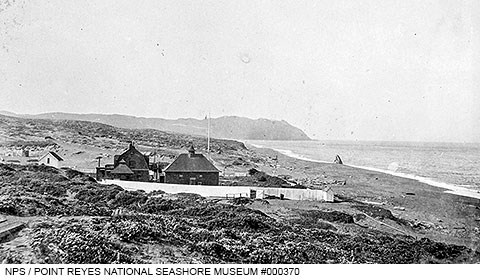
The cultural history of Point Reyes reaches back some 5,000 years to the Coast Miwok Indians who were the first human inhabitants of the Peninsula. Over 120 known village sites exist within the park. According to many experts, Francis Drake landed here in 1579, the first European explorer to do so. In response to the many shipwrecks in the treacherous coastal waters, key lighthouse and lifesaving stations were established by the United States Government in the late 1800s and early 1900s. In the early 1800s, Mexican land grantees established ranchos. They were followed by a wave of American agricultural operations, which continue to this day in the Seashore's pastoral zone. By 1914, Guglielmo Marconi sited and commissioned the building of a wireless telegraphy stations in the Point Reyes area, which played an important role in maritime communications for ships on the Pacific Ocean through the late 1900s. Visitors to Point Reyes are often curious about how their favorite beaches, trails, or places got their names. If you are one of those visitors—or even if you don't get the opportunity to visit but you are interested in learning more about the park's history—our Place Names page was created for you. Learn more about the People, Places, Historic Landscapes, Historic Structures, and Archeology at Point Reyes National Seashore. The Point Reyes National Seashore museum collection currently holds over forty oral history interviews compiled by the park historian between 1985–1994. The Point Reyes National Seashore Museum holdings include natural history specimens, archeological collections, historic objects, and archives. |
Last updated: February 23, 2024
